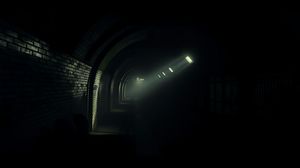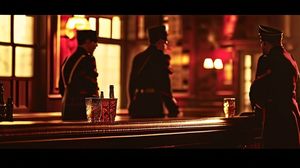
On the south side of Piccadilly, near the underpass and close to the entrance of Green Park, stands a unique piece of London's street furniture: the Porter's Rest. This shoulder-height structure, resembling a narrow table, was originally installed in 1861 to provide relief for porters and others carrying heavy loads through the bustling streets of Victorian London.
The Porter's Rest was erected at the suggestion of R.A. Slaney, a Member of Parliament for Shrewsbury, who advocated for the welfare of labourers. The design allowed porters to rest their burdens without the need to lower them to the ground, thereby conserving energy and reducing strain. Such rests were once common throughout the city, but the Piccadilly rest is believed to be the last of its kind.
In 2015, the original Grade II listed Porter's Rest mysteriously disappeared, sparking concern among heritage enthusiasts. Following public outcry and a dedicated campaign, a faithful replica was unveiled in May 2016, reinstating this historical artefact to its rightful place. The replica maintains the original's design, featuring a brass plaque that reads: "At the suggestion of R.A. Slaney Esq. who for 20 years represented Shrewsbury in Parliament, this Porter's Rest was erected in 1861 by the Vestry of St. George Hanover Square for the benefit of porters and others carrying burdens."
Today, the Porter's Rest serves as a tangible link to London's past, offering passersby a glimpse into the daily lives of 19th-century labourers. Its presence on Piccadilly is a testament to the city's rich history and the enduring importance of preserving such unique elements of urban heritage.

Making the Most of Your Visit:
If you're there early in the morning or late in the evening, take a moment to appreciate the relative solitude of this little piece of history amidst the usually busy Piccadilly. It's a striking contrast and offers a great photo opportunity without too many people bustling in the background.
Check out the brass plaque for a snippet of history. Often overlooked, it tells the tale of R.A. Slaney and adds context to the purpose of the Porter's Rest. It's a delightful detail for history buffs.
Once you've taken in the Porter's Rest, look around and imagine the Victorian London of 1861. It's fascinating to think about how much effort went into the simple task of carrying goods and why such a rest was so necessary back in the day.
If you're wandering on foot, it's a nice little stopping point to catch your breath and take in the views before heading into Green Park for a leisurely stroll.
For a quirky experience, try to "rest" in a similar way to how porters would have used the structure while imagining yourself a 19th-century worker. It's a fun, albeit brief, way to engage with London's working-class past.

Visiting Times & Costs:
Porter's Rest, Piccadilly is an open public piece of street furniture accessible all year round, 24 hours a day. There is no entrance fee or charge as it is situated in a public space.
The rest is generally accessible to most visitors, with no specific physical barriers, although visitors should be cautious of traffic and bustling crowds typical of Piccadilly.

Address & Map:

Nearby:























